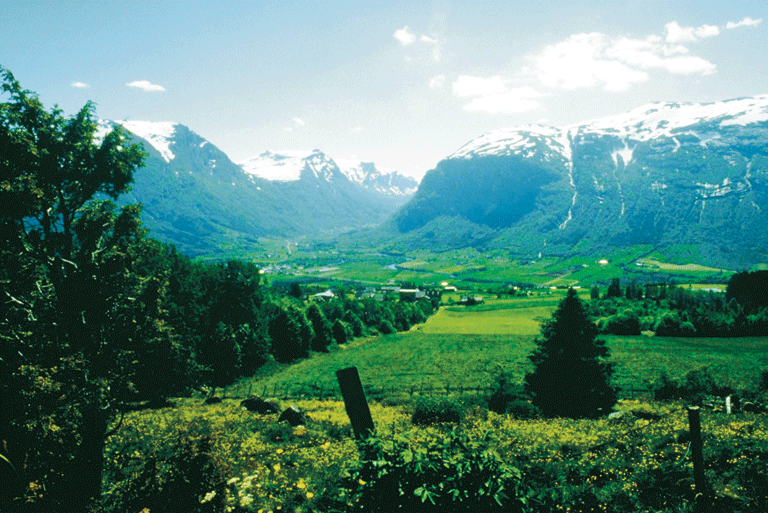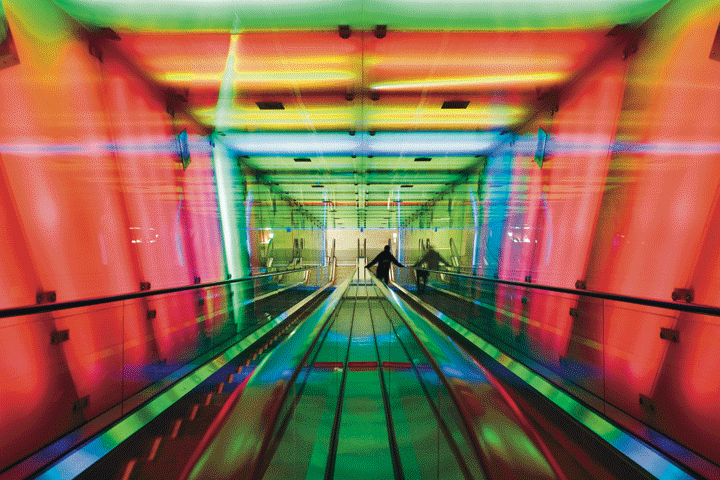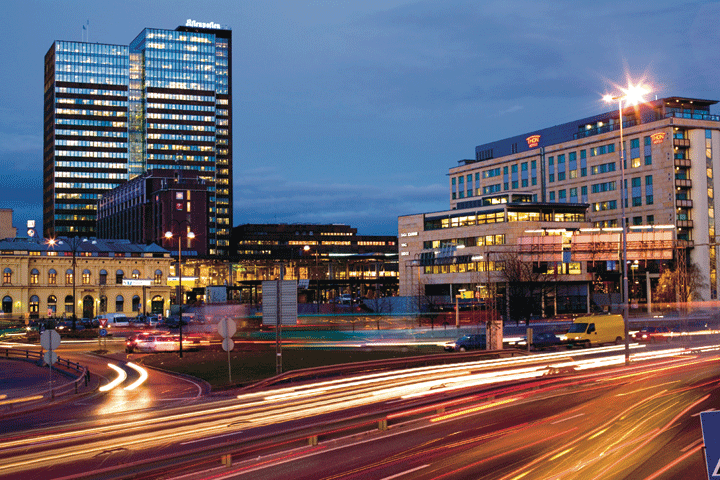
![]() Travel
Travel
Oslo
Norway’s Green Heart
In this earthy city, even the most highbrow landmark seamlessly merges with nature.
By:Raphael Kadushin*

The most revealing fact about Oslo? “Only one-third of the city is urbanized,” says Per Ditlev-Simonsen, mayor of Norway’s capital. “The other two-thirds is nothing but amazing forests, lakes, and rivers.”
If that passionate Norwegian preference for pine trees over parking lots isn’t enough to lure visitors, oil-revenue-rich Oslo now flaunts a glossy new Nobel Peace Center and a developing riverfront. And coming next spring: a white marble opera house that tellingly overlooks the Oslo Fjord. In this earthy city, even the most highbrow landmark seamlessly merges with nature.
Fast Facts
Norway’s cultural and financial heart, Oslo weathers dark and frigid winters, but balmy summer days are made longer by the midnight sun. A physically large city, Oslo has an efficient public transportation system. Forgo pricey cabs and hop the express train from the Gardermoen Airport into town.
Here are eight ways to embrace this nature-loving Scandinavian capital:
1. Salute the Peacemakers
Inaugurated in 2005 near Oslo city hall, where the Nobel Peace Prize is given every December, the Nobel Peace Center (www.nobelpeacecenter.org) features a room dedicated to all the Peace Prize winners. “We call it the Nobel Field,” says Kirsti Svenning, the center’s Web editor. Ninety-six LCD screens, each displaying one Peace Prize laureate’s portrait and biography, poke up like blooms in a garden of glowing light straws.
2. Ski-Jump Without the Skis
Skiing is a primal part of the Norwegian soul, and Oslo’s classic attraction is the Holmenkollen (www.skiforeningen.no), a ski jump dating to 1892 that offers an aerial view of the city.
Amateurs will have to settle for a ski simulator ride below the jump that gives the experience of shooting downhill at 81 miles an hour. If that’s too daunting, the Holmenkollen Ski Museum displays a circa-600 a.d. wooden ski, as well as ski poles from the 1870s that do double duty as drinking cups or hunting spears.
3. Revisit the Scream
The Munch Museum (www.munch.museum.no) showcases the largest collection of the Norwegian artist’s work, willed to Oslo when he died in 1944. Munch’s most famous work, the visceral “The Scream” was recently returned to the collection after its headline-making theft. “The museum has thoroughly upgraded its security,” says senior curator Magne Bruteig. Still, “The Scream” remains under restoration until next summer and is not currently on display. The theft ironically renewed interest in Munch’s art. “There is something utterly disturbing about his best works,” says Bruteig. “They talk to you in a very direct way about great themes that never go out of fashion: love, angst, death.”
4. Taste Norway’s Bounty
“Our berries, slowly ripened in a cool climate, and our lamb, which grazes on heather, and the Norwegian fish are all things I miss when I travel,” says food writer/chef Andreas Viestad, a host of the New Scandinavian Cooking show on PBS. Viestad recommends Restaurant Oscarsgate (www.restaurantoscarsgate.no), where the “brilliant” young chef Bjorn Svensson offers innovative five- or eight-course tasting menus, as well as á la carte dishes such as turbot with caviar and cucumber chili.
For something more traditional, though, Viestad suggests the august Theatercaféen (www.theatercafeen.no), which serves fried Arctic char and reindeer steak in a gold-colored dining room.
“There may be a furious snow storm outside,” says Viestad, “but when you enter the café you know you are in heaven.”
5. Spend Time in a Country House
The open-air Norwegian Folk Museum (www.norsk folkemuseum.no) has gathered 156 historic buildings -- both rural (manors, farms) and urban (a grocery, a warehouse) from all over Norway. 6. Experience True Nordic Cool
6. Experience True Nordic Cool
“Right now, the Grunerlokka on the east side of town remains the lively neighborhood that still has a charming, young flavor, and streets packed with clothing shops, restaurants, and cafés,” says Miriam Lund Knapstad, a cultural journalist for the Oslo Aftenposten. Trabant (www.trabantclothing.com) is a good vintage clothing boutique.”
7. Sail with the Vikings
For Mayor Ditlev-Simonsen, the city’s most important attraction is the Viking Ship Museum (www.khm.uio.no/english/viking--ship-- museum/index.php).
“The three Viking ships on display here were dug out of ninth-century burial grounds near the Oslo Fjord, and they are good examples of the ships our forefathers used to settle Iceland, Greenland and Newfoundland,” he says. The vessels’ streamlined, sculptural elegance still resonates in contemporary Nordic design.
8. Take a Hike
Called by many natives tur day, or hiking day, Sunday is the time when families head outdoors.
“In winter we take the tram up to the forest and go cross-country skiing,” says Jens Blom, manager of the sleek Bolgen & Moi Briskeby restaurant (www .bolgenogmoi.no). The city’s Tryvann Winter Park alone offers a choice of 14 trails. “In summer we go to Bygdoy Peninsula for swimming or sunbathing, or Hovedoya Island for the beach and ruins of a monastery,” Blom says. Tur day is the reason Blom stays in his hometown.
“Just ten minutes from the city center you can be all alone, in the middle of a forest,” he says.
* Raphael Kadushin is a contributor to National Geographic Traveler